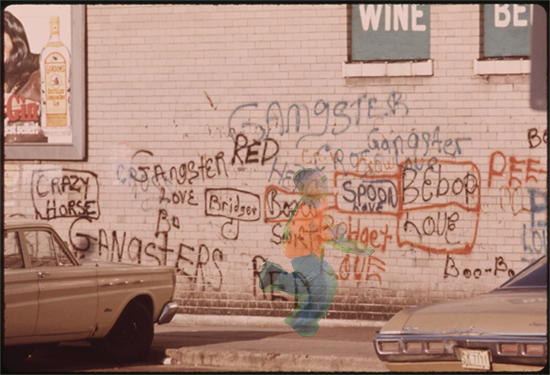Paul Ryan's statement last week was a marker of more than a personal political misstep. It was an indicator of a belief system that we as a nation have progressed beyond the consequences of our history.
Congressman Paul Ryan:
We have got this tailspin of culture, in our inner cities in particular, of men not working and just generations of men not even thinking about working or learning the value and the culture of work, and so there is a real culture problem here that has to be dealt with.
Ryan's statement has undertones of racial bias and ignorance, and it fails to acknowledge the depth of the context of America's dark history. A history that digs back to the tobacco farms of Jamestown, Virginia in 1619, then makes its way forward to the lunch counters in the Whites Only diners of Selma, Alabama in 1965 and now lies in new form behind prison bars across the nation. America's problem is not one of black men struggling because they don't want to work; it is more so one of a history that made color separate wealth along simple black and white lines. The dilemma is that without being honest about history, you cannot create a proper solution. Instead of looking at how our history crippled and scarred generations of African-Americans families, Congressman Ryan looks to hide behind personal responsibility as the reason for social failure. A responsibility that fails to acknowledge the lack of jobs in the inner city, and does not explain why ghettos and poverty have persisted in a direct correlation with a post-Jim Crow America. Social issues that were created purposefully are now made to seem as if they happened by the choice of the victims of those social choices, black American families.
As described in the Daily Beast piece "How We Built the Ghettos" by Jamelle Bouie:
Redlining is the practice of denying key services (like home loans and insurance) or increasing their costs for residents in a defined geographical area. In theory, this could be used against anyone. In reality, it was almost exclusively a tool to force blacks (and other minorities) into particular geographic areas. The practice began with the National Housing Act of 1934, which established the Federal Housing Administration, as well as the Federal Home Loan Bank Board. It was this agency which created "residential security maps" for several cities to determine the safety of real estate investments in selected areas ... Existing black neighborhoods were lined as unsafe, and thus ineligible for financing. For prospective property owner, this was terrible: Absent cash on hand, there was no way to afford a home or a business in your area. What's more, blacks were all but barred from entering white neighborhoods, if not by restrictive racial covenants (which forbid property sales to African Americans and other minorities) then by violence and intimidation.
In short, redlining forced blacks into particular areas and then starved those areas of affordable capital. Combined with widespread job discrimination -- which barred blacks from public employment and forced them into low-wage labor -- you had neighborhoods that were impoverished by design.
Paul Ryan, born of Irish and German parents in small town America, represents a belief system that looks at effort as the key identifier of success. The problem is that effort is not the story of American opportunity. The undertone of his statement about the inner city is one founded on a utopian American Dream that was not deferred by color, but rather by choice. The fundamental problem with his approach being that it fails before history. In this nation far more often one of the key identifiers of opportunity is race, this is because of the direct way the racial divide between blacks and whites was used to disseminate opportunity throughout U.S. history. Looking across the nation today you can find multiple examples, some of the most vivid being in Ryan's own home state of Wisconsin. As written by David McCarthy in his thesis "Black in a White City: Racism and Segregation in Milwaukee, 1960-1970":
Racism and anti-black sentiments were very prevalent in Milwaukee during the sixties, and though said tensions have diminished since the Civil Rights Era, Milwaukee is still considered the most racially segregated city in America according to recently published Census Bureau reports ... Additionally, the paper takes into account the failure of the housing market in Milwaukee in the late sixties, leading to the formation of slums and ghettos in Milwaukee.
In 2009 the Milwaukee Journal Sentinel reported, "Up to 57% of Milwaukee area's African-American males are jobless." Those types of catastrophic numbers are the marker of systemic failure, not personal irresponsibility. America's racial divide has created a chasm whereby the top 1 percent of America that controls most of our country's access to opportunity are almost entirely white. Therefore it breeds more white opportunity as they hire their own friends, family and associates to grow their respective wealth.
As I wrote in a prior piece "Paula Deen, Trayvon Martin, the Shadow of Racism":
The false belief held is that it is all working itself out through progress, as blacks purportedly are presented with more economic opportunity than ever before. Yet when we look at data we see otherwise; according to data presented by MSNBC's website the Grio, there are roughly 1.4 million American households in the top 1 percent of earners; blacks are a mere 1.4 percent of this group (approx. 19,600 households). To put it in context, there are 40 million blacks in America -- living in 15.4 million households, according to the census; 27.4 percent of all blacks (approx. 12.5 million people) live below the poverty line, making less than 20,000 annually for a family of three. In addition, the site continues, the median worth for the few blacks in the top 1 percent of earners is $1.2 million in assets in net worth. Note: For the large mass of whites in the top 1 percent (approx. 1.3 million households), the median worth is $8.3 million in Assets, with a mere $300,000 in debt.
Despite it all, Paul Ryan does not see this truth or chooses to ignore it altogether. Ryan fails to look at mass incarceration, and the lasting consequence of privatizing prisons in a country that in its recent history had chattel slavery as part of its cultural makeup. Ryan fails to look at the reality of actual job opportunities for African American men in the ghettos, the numbers of which are abysmal as aforementioned. Ryan in the end fails to look in the mirror and be honest about the fact that African American poverty was created over lifetimes, and "generations" of black men are unable to work in the inner-city by design.
"What happens to a dream deferred?/Does it dry up, like a raisin in the sun?/Or fester like a sore/And then run?/Maybe it just sags like a heavy load/Or does it explode?" -Langston Hughes


